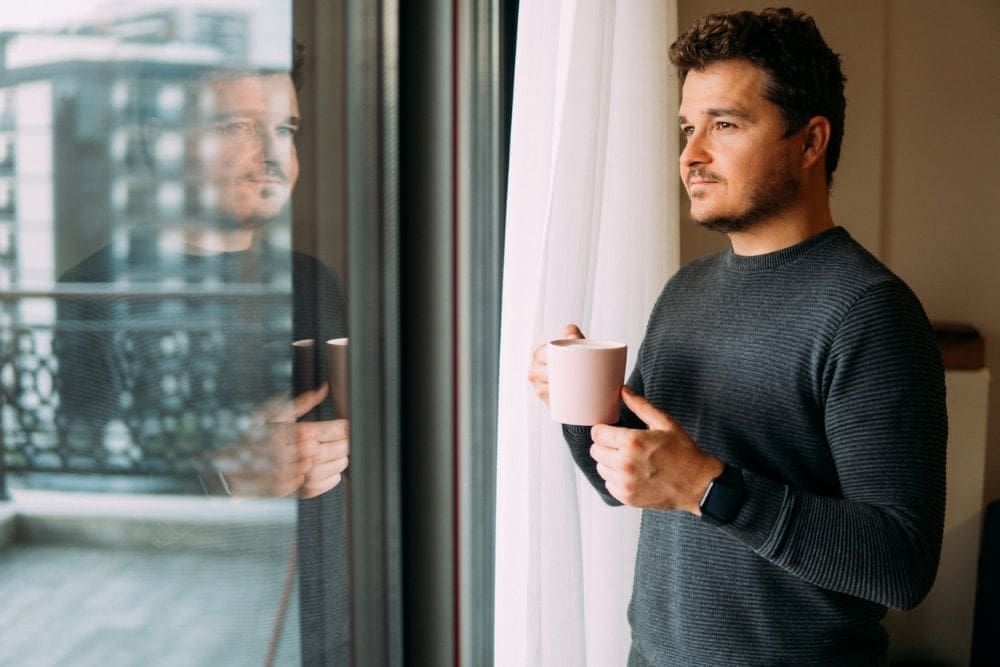It may start innocently. Maybe you’re taking a prescription after surgery, needing a few pills to manage chronic pain, or having a friend offer something to “take the edge off.” You tell yourself it’s temporary. You tell yourself you’re in control. But opioids can quietly take over. What begins as relief can gradually turn into dependency, sometimes before you even realize what’s happening.
If you’re reading this, perhaps you’ve started to wonder whether your relationship with pain medication has gone too far, or maybe you’re watching someone you care about slip away. Either way, noticing the early signs of opioid addiction can make all the difference.
Why Opioids Are So Addicting
Opioids are a class of drugs that include prescription painkillers like oxycodone (OxyContin), hydrocodone (Vicodin), morphine, and fentanyl, as well as illegal drugs like heroin. They work by attaching to the brain’s opioid receptors, reducing pain and triggering a sense of relaxation and euphoria.
That “high” is what makes opioids so addictive. Over time, your brain begins to rely on the drug to feel normal. The more you take, the more your tolerance grows—and the harder it becomes to stop. What once felt like control begins to feel like survival.
When your body becomes dependent on opioids, stopping suddenly can cause intense withdrawal symptoms such as muscle pain, nausea, anxiety, and insomnia.
Common Types of Opioids
Understanding the types of opioids and how they’re used can help you recognize when use becomes dangerous.
- Prescription opioids. These are often prescribed for pain management after surgery, injury, or chronic conditions. Examples include oxycodone, hydrocodone, codeine, and morphine.
- Synthetic opioids. Fentanyl is one of the most potent synthetic opioids. It’s prescribed for severe pain but is also found in illegal street drugs, often mixed unknowingly with heroin or counterfeit pills.
- Heroin. An illegal opioid made from morphine, heroin is often cheaper and easier to find than prescription pills, making it a common next step for those already dependent on opioids.
The Hidden Signs of Opioid Addiction
Opioid addiction doesn’t always look like what you imagine. It doesn’t always mean someone is visibly high or disheveled. Many people struggling with opioid addiction are professionals, parents, and students. These people may seem to be functioning on the outside, but are fighting a silent battle inside.
Here are some signs you shouldn’t ignore:
- Changes in behavior. You may notice mood swings, irritability, or sudden bursts of energy followed by exhaustion. Someone who once was responsible and dependable might start missing work, skipping obligations, or showing up late. You might also find them being more secretive, hiding pills, avoiding questions, or isolating from loved ones.
- Physical symptoms. Opioids affect the body in visible ways. Look for pinpoint pupils, drowsiness, slowed breathing, or unexplained weight loss. Some people experience frequent flu-like symptoms, constipation, or itching. If the drug wears off, withdrawal can cause sweating, shaking, nausea, or muscle aches.
- Financial or legal trouble. Opioid addiction can quickly lead to financial stress. You might find yourself or your loved one borrowing money often, selling personal items, or struggling to explain missing funds. In some cases, people turn to illegal means to obtain drugs, leading to arrests or other legal issues.
- Loss of interest. Hobbies, relationships, and responsibilities start to fall away. Things that once brought joy no longer seem to matter. Addiction consumes mental and emotional energy, leaving little room for anything else.
- Doctor shopping or prescription misuse. If you find yourself or someone else visiting multiple doctors for prescriptions, using medication faster than prescribed, or taking pills not intended for you, it’s a clear sign that use has crossed into dangerous territory.
How to Get Help
Admitting there’s a problem is hard. Asking for help can feel even harder. But recovery is possible, and you don’t have to do it alone.
Reach Out for Professional Help
Medical professionals and addiction specialists understand how opioids affect your body and mind. Treatment often begins with detox, a supervised process that helps you safely withdraw from opioids while managing symptoms. From there, you can move into residential or outpatient treatment to address the emotional and psychological aspects of addiction.
Build a Support System
Recovery doesn’t happen in isolation. Surround yourself with people who support your sobriety—whether that’s family, sober peers, or a recovery group. You’ll find strength in connection and accountability.
Stay Consistent
Recovery is a journey, not a single moment. There will be challenges along the way, but every step forward counts. With ongoing therapy, support groups, and lifestyle changes, you can rebuild a life that feels steady, purposeful, and free.
Finding Hope and Healing in New Mexico
You don’t have to wait until things get worse to ask for help. Recognizing the signs of opioid addiction early can prevent tragedy and open the door to a healthier, more fulfilling life. Whether you’re struggling yourself or watching someone you love, the most important thing you can do is take action now.
At Las Cruces Recovery Center in Las Cruces, New Mexico, we offer comprehensive, evidence-based treatment for opioid addiction that meets you where you are. Our team provides a safe, compassionate environment where healing can begin.
If you or a loved one is struggling with opioid addiction, please reach out today. You don’t have to face this alone.



